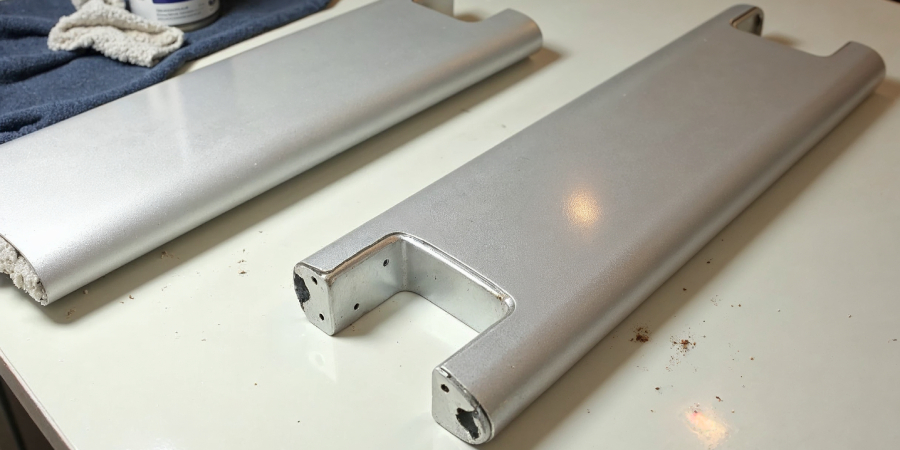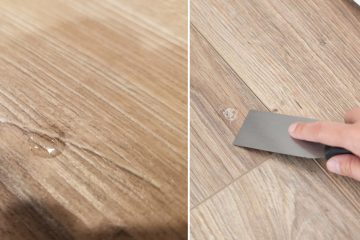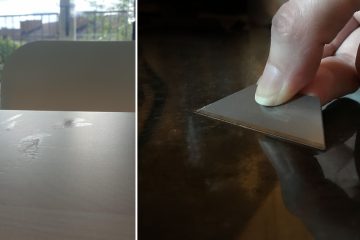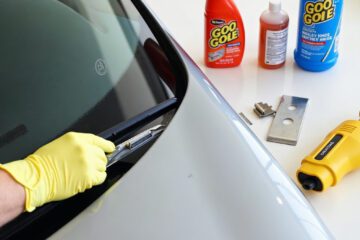Aluminum’s ubiquity in modern manufacturing and DIY projects is undeniable. From aerospace to automotive, and even in your kitchen, this versatile metal shows up everywhere. But when it comes to joining aluminum pieces, you might hit a snag. Welding can be tricky, and mechanical fasteners don’t always cut it. That’s where gluing comes in handy. Let’s dive into the nitty-gritty of how to glue aluminum to aluminum like a pro.

Key Takeaways:
- Proper surface preparation is crucial for strong aluminum bonds
- Epoxy adhesives generally provide the strongest bonds
- Choose adhesives based on project requirements (strength, flexibility, curing time)
- Allow sufficient curing time and test bonds for quality assurance
Understanding Aluminum: The Adhesive Challenge
Aluminum has a few quirks that make it a bit of a drama queen when it comes to bonding. First off, it’s quick to form an oxide layer when exposed to air. This layer is like that friend who always shows up uninvited to your party – it gets in the way of good adhesion. Secondly, aluminum’s surface is smoother than a fresh jar of Skippy, giving adhesives little to grip onto. Lastly, it’s a great heat conductor, which can mess with how adhesives cure.
The Science of Aluminum Adhesion
To nail aluminum bonding, we need to get a bit nerdy. Adhesives work by getting up close and personal with the surface at a molecular level. The surface energy of aluminum plays a big role in how well adhesives stick. Some adhesives are just better dance partners for aluminum molecules than others.
3 Trustworthy Steps for How to Glue Aluminum to Aluminum
Here are three trustworthy steps for how to glue aluminum to aluminum:
1. Preparing Aluminum Surfaces: The Key to Success
Here’s where the magic happens. Proper surface preparation is the secret sauce to strong aluminum bonds. First, you’ll want to give your aluminum a good cleaning. Acetone or isopropyl alcohol works great for this. Think of it as giving your aluminum a spa day – you want it squeaky clean.
Next up, it’s time to rough things up a bit. Grab some sandpaper (80-120 grit works well) and give the surface a good once-over. This creates tiny nooks and crannies for the adhesive to latch onto. If you’re feeling fancy, you might even consider using an etching primer for extra oomph.
Remember, timing is everything. Once you’ve prepped your surface, you’ll want to bond it faster than you can say “oxidation.” The longer you wait, the more chance that pesky oxide layer has to reform.

2. Choosing the Right Adhesive: A Comprehensive Guide
Now for the fun part – picking your glue! You’ve got a few options here:
- Epoxy adhesives: These are the heavy hitters of the adhesive world. They come in one-part or two-part varieties and offer killer strength. Products like JB Weld are popular choices for metal-to-metal bonding.
- Acrylic adhesives: These fast-curing options are great for quick projects. They’re tough cookies that can handle impact and peel stress like champs.
- Polyurethane adhesives: If you need something flexible that can weather the storm (literally), polyurethanes are your go-to. They’re perfect for outdoor applications.
- Cyanoacrylate (Super Glue): While not the strongest option, super glue can be a quick fix for small aluminum repairs. Just don’t expect it to hold up your car’s bumper!

3. Application Techniques: From Novice to Pro
Applying adhesive isn’t rocket science, but there are a few tricks to get it right. If you’re using a two-part epoxy, mix it thoroughly – think of it like making a perfect martini, shaken not stirred. Apply a thin, even layer to both surfaces for maximum strength. Then, clamp those pieces together like your life depends on it (or at least your project does).
Remember to give your adhesive time to cure fully. Rome wasn’t built in a day, and neither are strong aluminum bonds.

You Can Check It Out to Remove Glue From Aluminum.
Real-World Applications: Success Stories and Case Studies
Aluminum bonding isn’t just for DIY enthusiasts. The automotive industry uses adhesives to create lightweight, fuel-efficient vehicles. Aerospace engineers rely on high-strength aluminum bonds to keep planes in the sky. Even marine applications benefit from the corrosion resistance of properly bonded aluminum.
Testing and Quality Assurance
How do you know if your bond is strong enough? Put it to the test! Destructive testing might sound intimidating, but it’s the best way to make sure your bond can handle the heat. If your bond fails, don’t despair. Examine the failure point – it can tell you a lot about what went wrong and how to fix it next time.
Troubleshooting Common Issues
Sometimes, things don’t go according to plan. Weak bonds can result from poor surface preparation, using the wrong adhesive, or not allowing enough cure time. You might need to adjust your application technique if you end up with bubbles or gaps in your bond. And if you make a mistake? Don’t sweat it. Most adhesives can be removed with the right solvent, giving you a do-over.
Safety First: Working with Adhesives Responsibly
Let’s face it, adhesives can be nasty stuff. Always work in a well-ventilated area and wear appropriate protective gear. Store your adhesives properly and dispose of waste responsibly. And if you get some on your skin? Don’t panic, but do seek appropriate first aid.
Beyond Glue: Alternative Methods for Joining Aluminum
While this guide focuses on adhesives, it’s worth mentioning that there are other ways to join aluminum. Welding and mechanical fasteners each have their place. And who knows? The future might bring even more innovative joining technologies.
FAQs About How to Glue Aluminum to Aluminum
Can You Use Super Glue on Aluminum?
Yes, but it’s not ideal for all applications. Super glue can work for small, non-load-bearing repairs, but for stronger bonds, consider epoxy or acrylic adhesives.
How Do I Remove Gorilla Glue From Aluminum?
Acetone or a commercial adhesive remover can help. Always test in an inconspicuous area first.
What’s the Strongest Glue for Aluminum?
Two-part epoxy adhesives generally provide the strongest bonds for aluminum-to-aluminum applications.
How Do I Glue Aluminum to Aluminum in a Car?
Clean and rub the surfaces using a high-strength, automotive-grade epoxy or acrylic adhesive. Always follow the manufacturer’s instructions.
Wrapping It Up
Gluing aluminum to aluminum doesn’t have to be a headache. With the right preparation, adhesive choice, and application technique, you can create bonds that are strong enough to go the distance. So go forth and bond with confidence! Remember, practice makes perfect. Don’t be afraid to experiment with different techniques and adhesives to find what works best for your specific aluminum bonding needs. Happy gluing!


